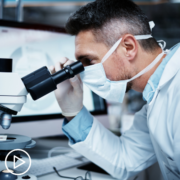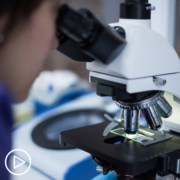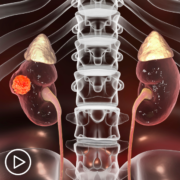Expert Guidance: Stomach Cancer Basics for Newly Diagnosed Patients
Expert Guidance: Stomach Cancer Basics for Newly Diagnosed Patients from Patient Empowerment Network on Vimeo.
What are stomach cancer basics for newly diagnosed patients to know? Expert Dr. Jun Gong from Cedar-Sinai Medical Center explains stomach cancer staging, where the cancer occurs, and advice for patients.
[ACT]IVATION Tip
“…ask the physician or care provider, ‘What is my stage of stomach or gastric cancer?’ and we will do our best to explain the stage.”
Download Resource Guide | Descargar guía de recursos
See More from [ACT]IVATED Gastric Cancer
Related Resources:

|

|

Do Gastric Cancer Risk Factors Differ Among Hispanic Communities? |
Transcript:
Lisa:
Dr. Gong, how do you explain stomach cancer to your newly diagnosed patients and care partners? And really important too, how do you explain disease staging to them?
Dr. Jun Gong:
So the way I explain stomach cancer or gastric cancer, is another term for this disease, to my patients is that we all are familiar somewhat with our organ that is the stomach. This is the organ that helps digest and process our foods. And it’s the organ that connects to the esophagus and then to the small bowel. And unfortunately, cancers can arise from this organ. And this is where it’s a little bit unique in the sense that unlike other cancers, the stomach is almost like a tube. It’s a hollow structure.
Unlike breast cancer, for example, where you can have a discrete mass where you can actually draw on a caliper and say this is 2 centimeters or 3 centimeters in dimension, stomach cancer tends to grow along the walls of this tube infiltrating to the inside of the lumen. Or it can even spread to the outside of the stomach as well.
And so this is how the staging is a little bit different for stomach or gastric cancer. And the way, instead of measuring by size, we measure how the depth of the infiltration of the tumor is along the thickness of the wall. And so the staging is similar to other cancer types where there’s a stage I, II, III, or IV connotation. And stage IV means that the cancer has spread outside the stomach and into distant sites such as the liver or lungs, while tumors of the stomach that are confined to the stomach and even to the lymph nodes around the stomach are still classified as I, II, or III. So this is a little bit about, a background, about how we explain what stomach cancer is and how the staging system works.
My activation tip for patients and care partners who are newly diagnosed with gastric or stomach cancers and are unsure about their stage is that it is always more than appropriate to ask the physician or care provider, “What is my stage of stomach or gastric cancer?” and we will do our best to explain the stage. And, of course, this is dependent oftentimes on the availability of information from a diagnostic workup. And how we stage the patient is usually dependent on imaging such as CT or MRIs or PET scans. And it’s often combined with ultrasound or endoscopic procedures such as an upper endoscopy or an endoscopic ultrasound, which is a specialized procedure that allows you to look within the thickness of the stomach to see how deep or how depth of the invasion of the stomach cancer is.







![Dr. Shah's [ACT]IVATION Tip](https://powerfulpatients.org/wp-content/uploads/Screenshot-2023-08-14-at-10.37.31-AM-1030x550.png)














